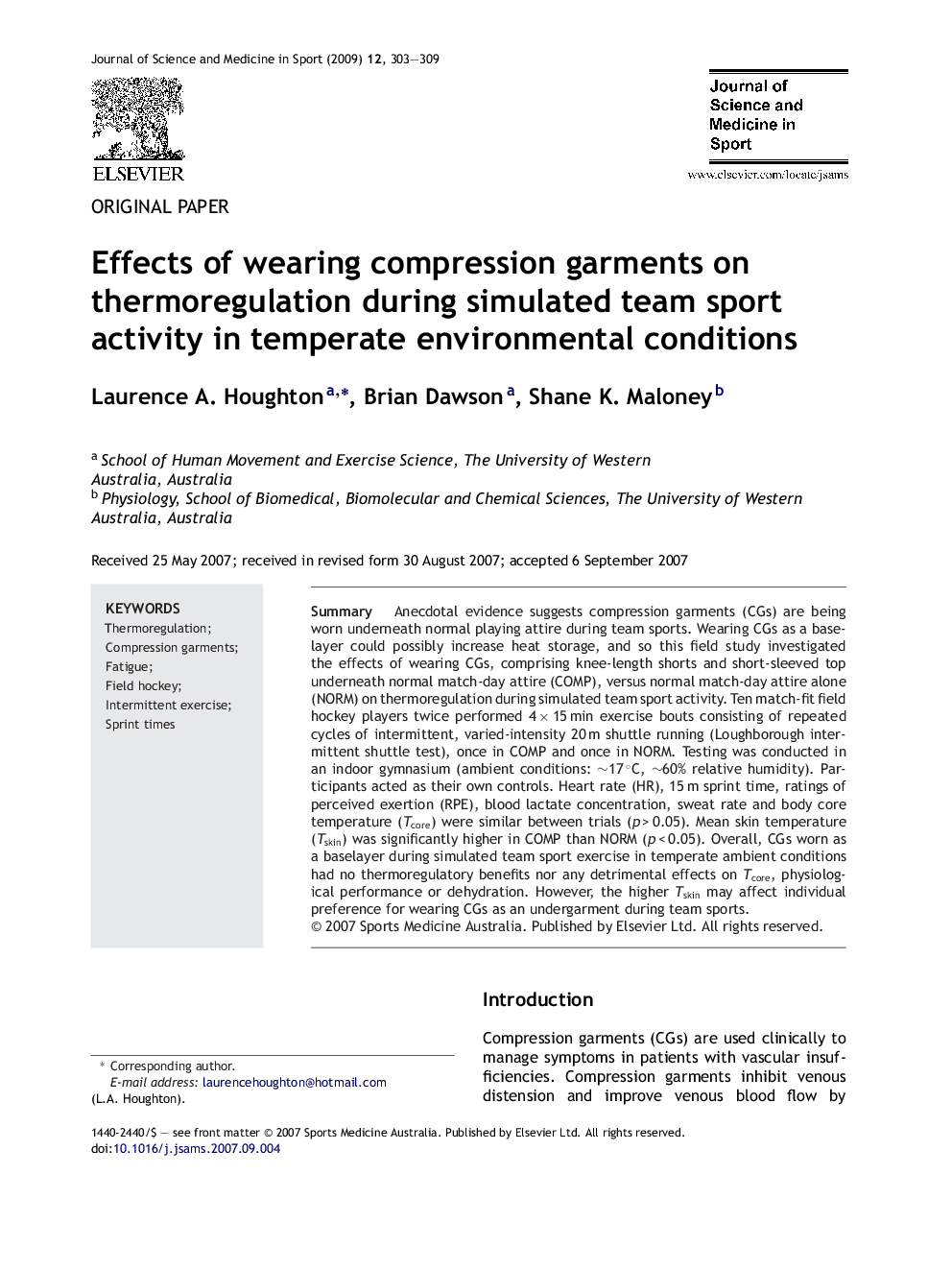| Article ID | Journal | Published Year | Pages | File Type |
|---|---|---|---|---|
| 2703277 | Journal of Science and Medicine in Sport | 2009 | 7 Pages |
SummaryAnecdotal evidence suggests compression garments (CGs) are being worn underneath normal playing attire during team sports. Wearing CGs as a baselayer could possibly increase heat storage, and so this field study investigated the effects of wearing CGs, comprising knee-length shorts and short-sleeved top underneath normal match-day attire (COMP), versus normal match-day attire alone (NORM) on thermoregulation during simulated team sport activity. Ten match-fit field hockey players twice performed 4 × 15 min exercise bouts consisting of repeated cycles of intermittent, varied-intensity 20 m shuttle running (Loughborough intermittent shuttle test), once in COMP and once in NORM. Testing was conducted in an indoor gymnasium (ambient conditions: ∼17 °C, ∼60% relative humidity). Participants acted as their own controls. Heart rate (HR), 15 m sprint time, ratings of perceived exertion (RPE), blood lactate concentration, sweat rate and body core temperature (Tcore) were similar between trials (p > 0.05). Mean skin temperature (Tskin) was significantly higher in COMP than NORM (p < 0.05). Overall, CGs worn as a baselayer during simulated team sport exercise in temperate ambient conditions had no thermoregulatory benefits nor any detrimental effects on Tcore, physiological performance or dehydration. However, the higher Tskin may affect individual preference for wearing CGs as an undergarment during team sports.
